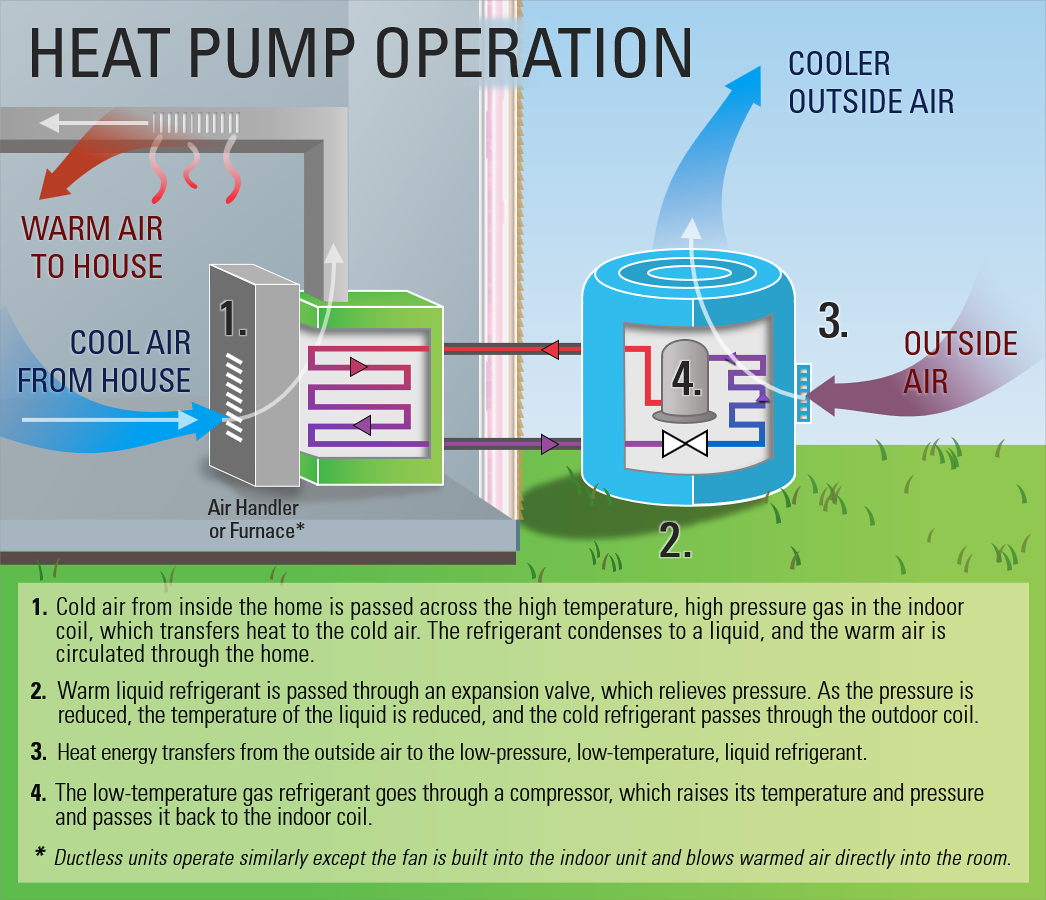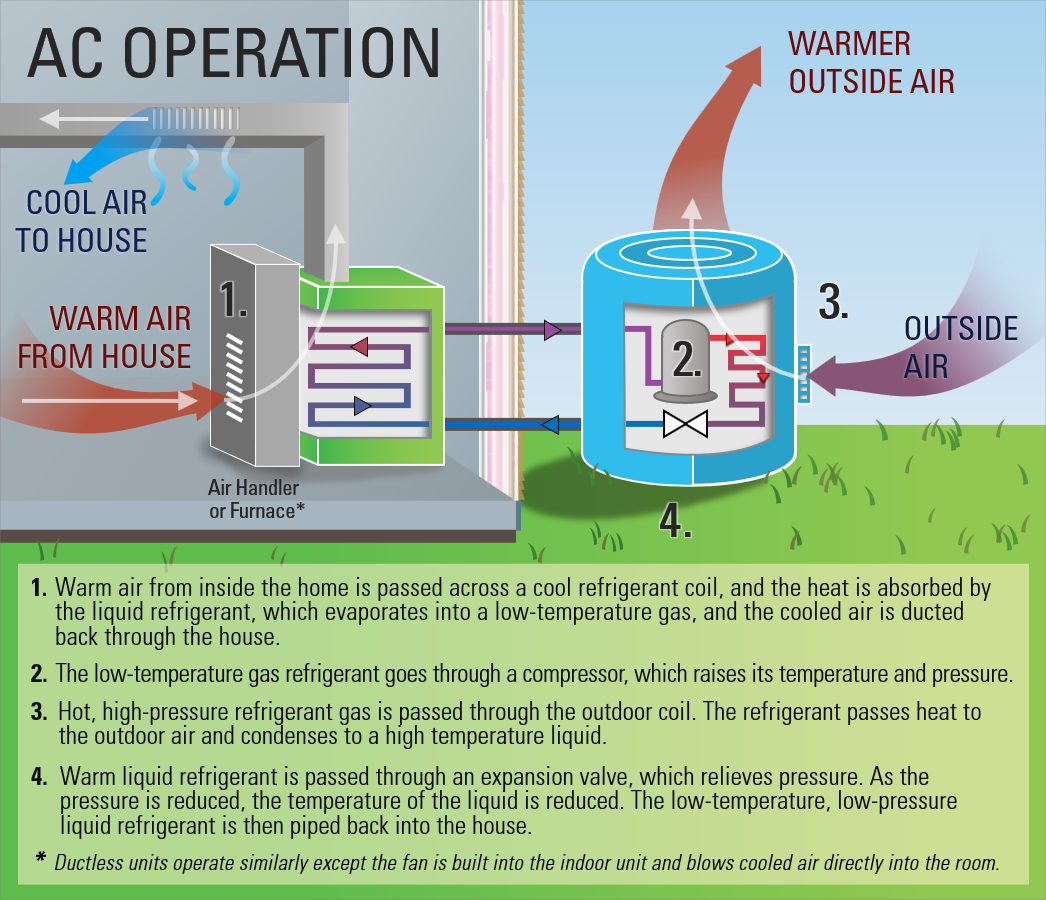How Does a Heat Pump Work?
If you are looking to replace the air conditioning or heating system in your home, you may want to consider an air-source heat pump. These products provide cool air in the summer, just like standard air conditioners, but also provide heat in the winter. But how exactly do they do both?
How Heat Pumps Work in the Winter
A heat pump uses this same cycle “run in reverse” in the winter to extract heat energy from the outside and transfer it into your home. Even when it’s really cold out, there is still some amount of heat energy in the air. Because the outdoor air has higher energy than the cold, low-pressure refrigerant, the refrigerant absorbs that heat and evaporates. Just like the air conditioning cycle, the gas refrigerant can be pressurized, which raises the temperature. When the refrigerant is piped back into your home, it is used to warm up the air inside, until the heat is extracted and it condenses back into a liquid, and the cycle continues.

How Heat Pumps Work in the Summer
In the summer months, a heat pump works just like a standard air conditioner would. Standard air conditioners, use a refrigerant to absorb unwanted heat in your home and transfer it to the air outside. This happens by changing the pressure of the refrigerant fluid. At low pressures, the refrigerant will easily absorb any heat available in the air and evaporate from a liquid to a gas. At high pressures, a gas refrigerant is higher energy than the outside air, so it passes heat to the surrounding air and the refrigerant condenses back to a liquid when it cools. By controlling the pressure of the refrigerant, an air conditioner can extract heat from your home, even on very hot days.

How Does a Heat Pump Save Energy?
Because it moves heat from one place to another rather than generating it, a heat pump uses less energy to warm your home than a conventional electric or gas system. In fact, many of them are efficient enough to earn the ENERGY STAR label. If you are replacing a central air conditioning system, heat pumps can work with the existing ducting in your home or are available as mini-split, or “ductless,” units, if your home does not have ductwork.
Even if you aren’t replacing your existing heating system as you add air conditioning, a heat pump can provide cooling in the summer and more efficiently cover some of the heating load of your home. In the coldest days of winter, even a small system can offset the operating cost of your main heating system. When looking at upgrading or replacing your home heating and cooling system, ask your contractor about ENERGY STAR certified heat pumps.
Source: ENERGY STAR Ask the Experts | Products | ENERGY STAR


